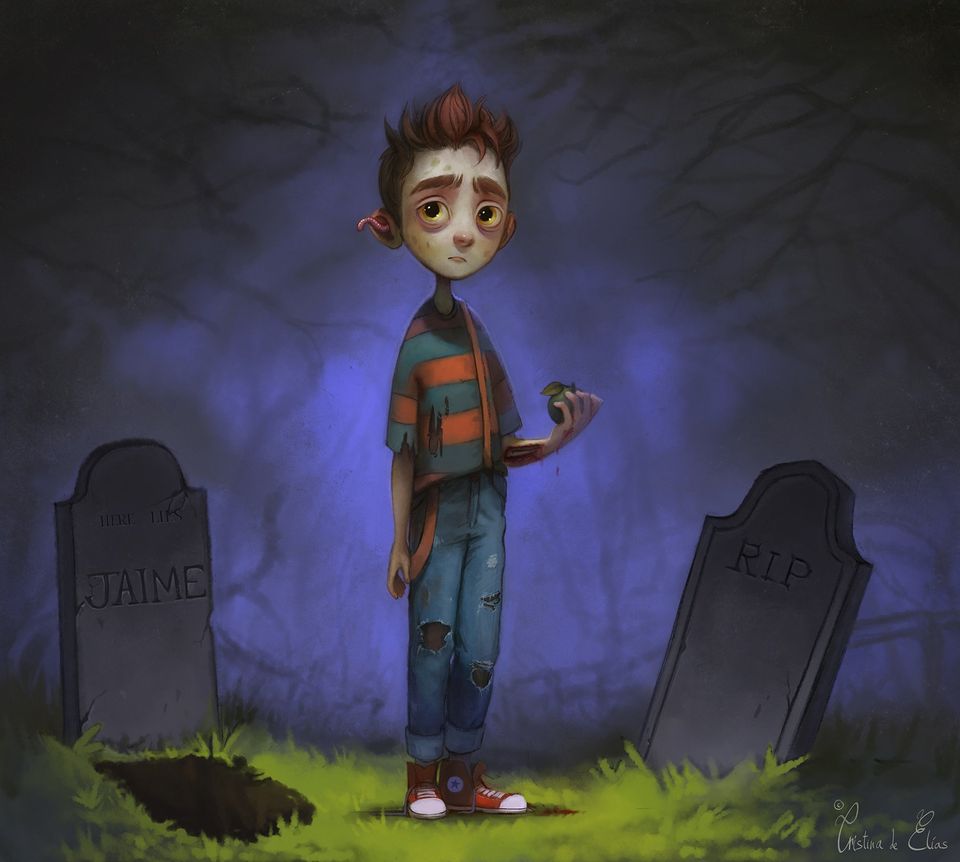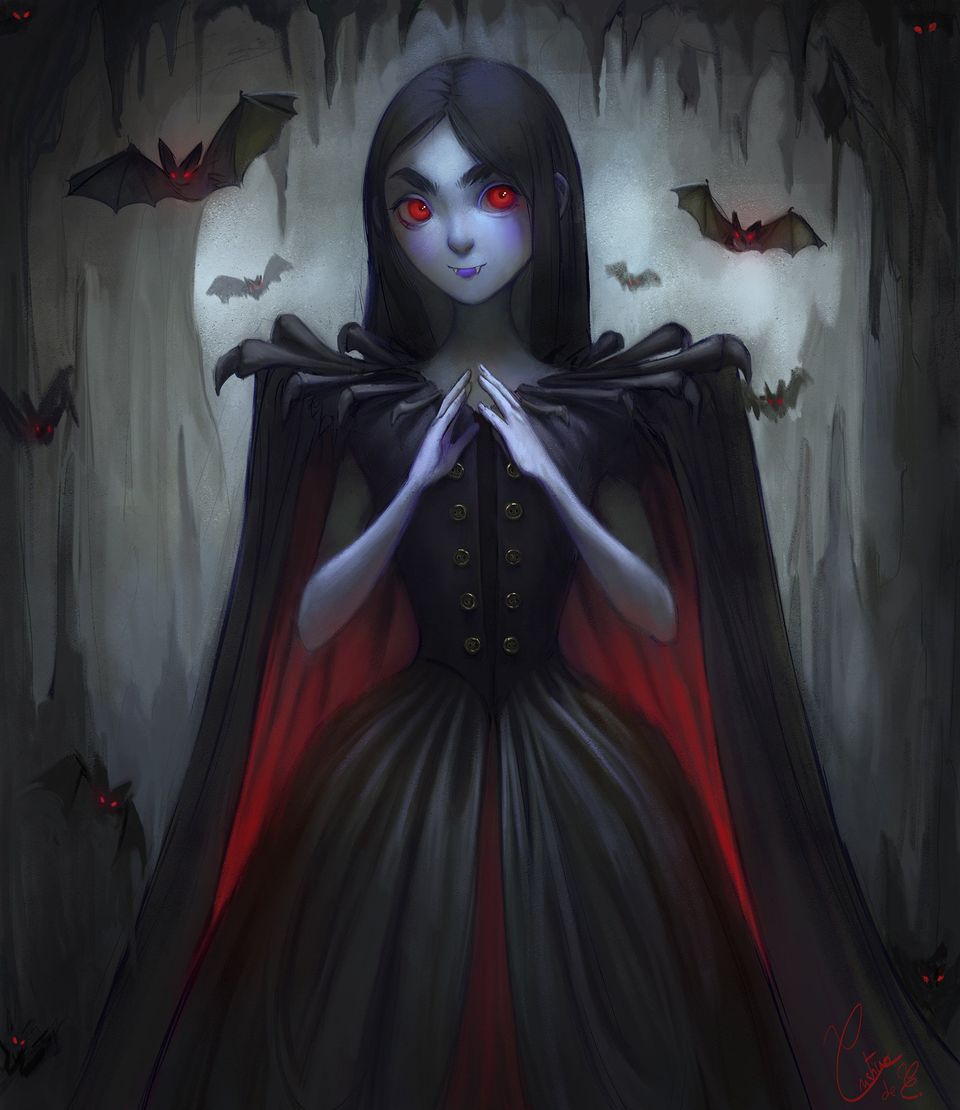Artist Spotlight: Cristina de Elias
February 26, 2020
Everyone’s work is deeply idiosyncratic: in our regular Spotlight segment we explore artists’ experiences and inspiration to understand what defines and inspires their unique styles.
Concept artist Cristina de Elias draws from literature, movies and modern technology to inspire and create her pieces.

Can you give us a brief background on yourself?
I’m an illustrator and concept artist born and raised in Barcelona, Spain. I manifested my passion for drawing when I was a little child. I knew I wanted this to be my profession the moment I learned you could make a living out of it.
Now that I’ve earned my bachelor’s degree in Fine Arts, I’m looking forward to investing all of my efforts into achieving my personal and professional goals as an artist. I’m currently working as an environment and character concept artist at 3D2Entertainment, and I am developing a fantasy video game named Arima.
What kind of influence does your location have on your career?
Many of the big studios I would one day like to work for, such as Disney, Pixar, Laika, Dreamworks, and many more, are located in the U.S. This makes it slightly harder for me to get an opportunity at one of the big studios, and would eventually require me to move there. However, thanks to technology and the internet, I can work on various projects with enterprises from all over the world as a freelance artist. Also, the internet is full of resources and online art schools through which we can compliment our education. As a result of this, the location one lives in definitely has a lower impact in an artist’s career than it did a few decades ago.
What is your greatest source of inspiration?
For me, anything that creates a sensorial stimulation can become a source of inspiration. Some examples of this would be music, literature, movies, other artists' work, a certain smell, a certain place, a color palette, nature. To be more specific, I’m especially moved by traditional tales, fairy tales, celtic folklore, romanticism, gothic literature, Tim Burton, Edwardian era, and Victorian era. Basically anything that incorporates a sense of nostalgia.
Could you pick one piece of art that has made a lasting influence on you, and if so why?
Charlie Bowater has always been one of my greatest influences. I was lucky to find her work on deviantart when I was just starting to get more serious about digital art. I learned a lot by observing and emulating her painting process. That definitely had a noticeable impact on my style. She did this piece called "Declan" back in 2009. I was 13 when I saw it for the first time, and I felt it really resonated with my own imagination and taste. I loved the concept, the composition, and the execution. I simply had a "This is the kind of art that I want to be able to create" moment.
What skills or techniques do you find most useful in your line of work? Do you use primarily traditional or digital methods to create your artwork?
To be an illustrator it is essential to know the fundamentals: anatomy, composition, light, color, etc. If you lack a good foundation you will encounter many obstacles on your way, which can easily lead to frustration because it cuts short your creative process and makes you feel stuck. I’ve learned this the hard way, and I’m still practicing and working towards building a solid base for myself. Mastering these essential skills gives you the ability to successfully replicate the images in your mind, which translates into a wider range of possibilities, more self confidence, and a greater sense freedom. I still draw traditionally from time to time, specifically on my sketchbook, but I mainly use digital methods.
How can people who are interested in discovering more of your work find it?
www.instagram.com/cristinadeelias
and Artstation www.artstation.com/cristinadeelias
accounts.
Scriba is a revolutionary digital stylus that is ergonomically designed to comfortably fit your hand and uses unique Squeeze-Motion technology. Order here.
Articles

In the period since COVID forced many of us back home and out of the office, remote work has become the new norm for many. The flexibility of working from home, especially for those with small children, is very compelling, but making a productive workspace is more than setting up a desk in the spare room. More people are seeking to create functional and comfortable workspaces in their homes, however, it can be difficult to strike the right balance between a professional office space and a cosy home environment. Here are some tips for designing a home workspace that meets both of these needs: Dedicate a specific area for work Designating a specific area for work is essential for separating work from leisure time. This could be a separate room or just a corner of a room. It is important to make sure that the workspace is free from distractions and clutter, as this will help you stay focused and productive. Choose the right furniture Ergonomic furniture is key to a comfortable and productive workspace. Invest in a comfortable chair, a desk that is the right height, and a good-quality mouse and keyboard. If you are prone to back pain, consider a standing desk. Add personal touches Just because your workspace should be functional, doesn’t mean it can’t be personal. Add photos, plants, and other personal items to make the space feel like your own. This will help create a sense of comfort and make you feel at home in your workspace. Good lighting Good lighting is essential for a comfortable workspace. If possible, place your desk near a window for natural light. If not, invest in a high-quality desk lamp to provide bright, even light. Keep it organised An organised workspace will help you stay productive and focused. Use desk organisers, filing cabinets, and other tools to keep your work area free from clutter. A clean and organised workspace will also help you start each day with a clear mind. Consider your work style Think about the type of work you do and how you like to work. If you prefer a minimalist workspace, opt for a simple desk and a few basic supplies. If you need space for multiple screens and other technology, make sure you have enough room to work comfortably. Take breaks It’s important to take breaks throughout the day to avoid burnout. Step away from your desk, go for a walk, or do some stretching exercises to clear your mind and recharge.











